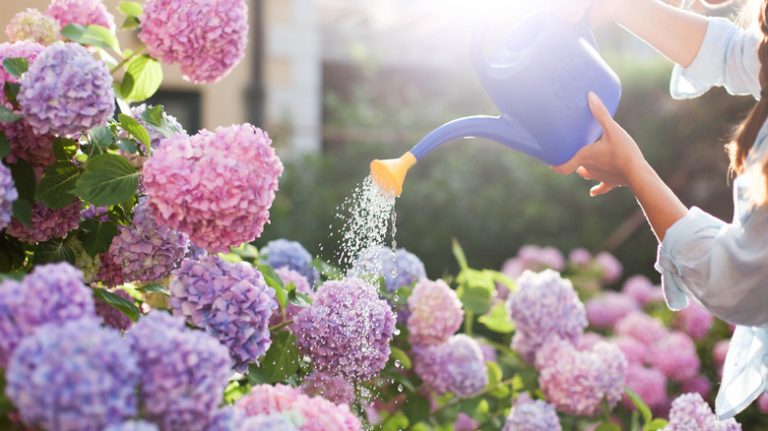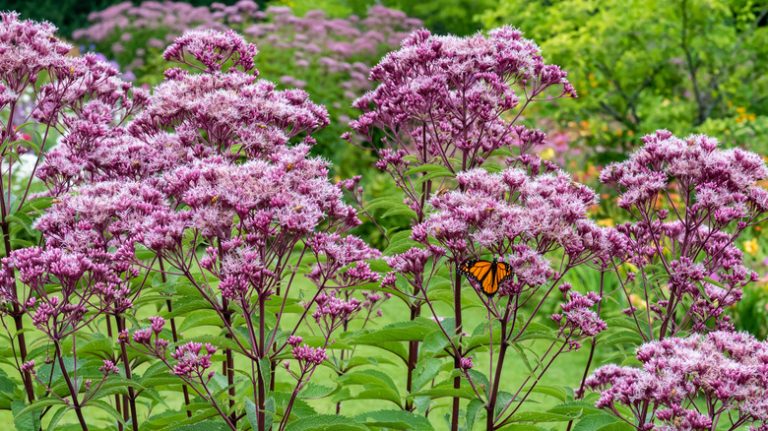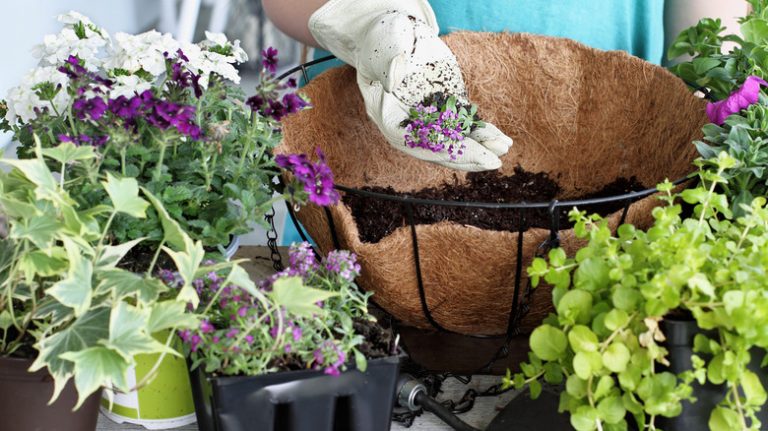If you are a gardening enthusiast and have a bird of paradise plant, you may have noticed that its leaves are splitting. This is a common problem that many bird of paradise owners face. There are several reasons why this may be happening, and in this article, we will discuss eight easy solutions to address this issue.
One of the main reasons why bird of paradise leaves split is due to poor watering practices. Overwatered plants can lead to root rot, which can weaken the leaves and cause them to split. On the other hand, underwatering can lead to dry and brittle leaves that are more prone to tearing.
Another factor that can contribute to leaf splitting is the lack of proper nutrients. Bird of paradise plants require essential nutrients to thrive, and a lack of these nutrients can weaken the leaves and make them more susceptible to damage.
Lighting is another important factor that can impact the health of bird of paradise leaves. Insufficient light can result in weak and elongated leaves that are more likely to split. On the other hand, direct sunlight can cause sunburnt spots or black tips on the leaves.
The humidity levels in your bird of paradise’s environment can also play a role in leaf splitting. Low humidity can cause the leaves to dry out, while high humidity can create a breeding ground for pests and diseases that can damage the leaves.
Lastly, physical damage can also cause the leaves to split. Pets, children, or even frequent dusting can lead to tears or cuts in the leaves. It’s important to handle your bird of paradise plant with care and avoid any unnecessary damage.
In the next section, we will discuss eight easy solutions to prevent and address leaf splitting in bird of paradise plants. These solutions include proper watering techniques, providing adequate nutrients, adjusting the lighting conditions, controlling humidity, and taking steps to prevent physical damage. By following these tips, you can ensure that your bird of paradise plant stays healthy and its leaves remain intact.
Bird of Paradise Leaves Splitting Reasons + What to Do
Frequent leaf splitting in Bird of Paradise plants can be caused by several factors. Understanding these reasons can help you address the issue and keep your plant healthy. Here are some common causes and steps you can take to prevent or treat leaf splitting:
1. Weak or wounded leaves: Bird of Paradise leaves are prone to splitting if they are weak or wounded. This can happen due to improper handling or accidental damage. Avoid rough handling of the leaves to prevent splitting.
2. Low humidity: Bird of Paradise plants prefer humid environments. If the humidity levels are low, the leaves can become dry and brittle, leading to splitting. Increase the humidity around your plant by misting it regularly or placing a humidifier nearby.
3. Aging leaves: As Bird of Paradise plants age, their leaves naturally start to split. This is a normal process and doesn’t indicate any problems with the plant. Simply trim off the old leaves to encourage new growth.
4. Sunburn: Bird of Paradise plants require bright, indirect sunlight. If they are exposed to direct sunlight for extended periods, the leaves can become scorched and split. Move your plant to a location with filtered sunlight or use sheer curtains to protect it from direct sunlight.
5. Watering issues: Overwatering or underwatering can cause Bird of Paradise leaves to split. Make sure to water your plant properly, allowing the top inch of soil to dry out between watering sessions. Also, avoid letting the plant sit in water-filled trays, as this can lead to root rot and leaf splitting.
6. Nutrient deficiency: Bird of Paradise plants require regular fertilization to stay healthy. Nutrient deficiencies, especially in iron (chlorosis), can cause leaves to split. Use a balanced fertilizer according to the plant’s needs, particularly during the growing season.
7. Pests: Some pests, like spider mites or aphids, can damage Bird of Paradise leaves and cause them to split. Regularly inspect your plant for any signs of pests and treat them accordingly using insecticidal soap or natural remedies.
8. Vascular problems: In some cases, Bird of Paradise leaves may split due to vascular issues. If the splitting is severe and affects multiple leaves, it may be necessary to replace the plant or consult a professional for further diagnosis and treatment.
By addressing these common reasons for leaf splitting and following the appropriate steps, you can maintain a healthy and well-nourished Bird of Paradise plant. Remember to provide the right amount of sunlight, water, and nutrients, and keep an eye out for any signs of problems.
Source: gardenloversclub.com
FAQs
Q: How often should I mist my Bird of Paradise plant?
A: Misting your Bird of Paradise plant once or twice a week should be sufficient to increase humidity levels.
Q: Can I keep my Bird of Paradise plant in an office with artificial lighting?
A: Bird of Paradise plants require bright, indirect sunlight. While artificial lighting can be used to supplement their light requirements, they still need natural sunlight for proper growth.
Q: What is the best way to prevent pests from infesting my Bird of Paradise plant?
A: Regularly inspect your plant for any signs of pests, such as webs or small insects. If you spot any, treat them immediately using appropriate pest control methods.
Q: My Bird of Paradise leaves are turning brown and curling. What could be the problem?
A: There are several reasons for brown and curling leaves, including under or overwatering, too much or too little sunlight, or nutrient deficiencies. Assess the plant’s care routine and make necessary adjustments.
Q: Can broken Bird of Paradise leaves be saved?
A: If a Bird of Paradise leaf is severely damaged or broken, it is usually impossible to save it. However, you can trim off the damaged portion to prevent further problems.
Why do birds of paradise leaves tear
One common issue with birds of paradise plants is their leaves tearing. There are several reasons why this may happen.
The first reason for leaf tearing is excessive movement of the plant itself. Birds of paradise have long, thin leaves that can easily get caught on objects or surfaces in their surroundings. If the plant is placed in a location with high foot traffic or in an area where it can be easily brushed against, the leaves may tear. To prevent this, it is important to choose a suitable location for the plant where it will have enough space to grow without being disturbed.
Another reason for leaf tearing is the atmosphere in which the plant is growing. Birds of paradise prefer a humid environment, and if the air is too dry, their leaves may split or curl. Providing an adequate amount of humidity around the plant can help prevent this issue.
Infections can also cause leaves to tear. Bacterial and fungal diseases can attack the leaves, leading to irregular browning, spotting, or rot. If left untreated, these infections can spread and cause further damage to the plant. Using effective gardening solutions and ensuring good hygiene practices can help prevent and treat these diseases.
Older leaves are more prone to tearing, as they are more delicate and have been exposed to various environmental factors for a longer period of time. While it is normal for some older leaves to tear or have minor damage over time, excessive tearing may indicate an underlying issue that needs to be addressed.
In some cases, birds of paradise leaves may also tear due to playful or curious animals. Pets or wildlife, such as birds, may interact with the plant and accidentally tear the leaves. If this is a recurring problem, it may be necessary to create barriers or move the plant to a more secure location.
In conclusion, there are several factors that can cause birds of paradise leaves to tear, including excessive movement, dry atmosphere, infections, older age, and animal interactions. Understanding the specific reasons behind leaf tearing can help gardeners take appropriate measures to prevent and treat the issue.
Accidents and Animal Activity
Accidents and animal activity can also contribute to the splitting of bird of paradise leaves. Animals, such as birds or other wildlife, may inadvertently cause damage to the leaves while they are trying to perch or land on them. Additionally, accidental bumps or physical contact can occur, resulting in torn or bent leaves.
Where the bird of paradise plant is located can also play a role in leaf splitting. If the plant is placed in a high traffic area or in a spot where it is easily brushed against or bumped, the leaves are more likely to experience accidents and damage. To prevent this, it is important to place the plant in a location with minimal foot traffic or where it is less likely to be disturbed by animals or human activity.
Another factor that can contribute to leaf splitting is a lack of proper care and maintenance. Curling, smaller leaves, and leaf deficiencies can cause the leaves to become weaker and more susceptible to damage. If the plant receives insufficient sunlight, water, or nutrients, the leaves may start yellowing, become brittle, or naturally weaken, making them more prone to accidents.
It is necessary to ensure that the bird of paradise plant is provided with the necessary care for it to thrive and prevent leaf splitting. Regularly checking for signs of problems, such as yellowing or browning leaves, can help identify and address any deficiencies or infections before they further weaken the plant. Providing the plant with the appropriate growing conditions, such as well-drained soil and indirect sunlight, can also contribute to stronger and healthier leaves.
In some cases, accidents and animal activity may result in tears or splits along the length of the leaves. Large-leaved plants like bird of paradise have a complex vascular system, and any damage to this system can cause significant problems for the plant. Among organic causes, overwatering, poorly drained soil, or exposure to extreme temperatures, particularly during the winter months, can exacerbate leaf splitting.
To prevent accidents and animal activity from causing damage to potted bird of paradise plants, there are several solutions to consider. One solution is to place the plant in an area where it is less likely to be accessed by animals or children. Additionally, placing protective barriers or screens around the plant can help prevent accidental physical contact. For potted plants, placing them on sturdy, stable surfaces and avoiding overwatering can also reduce the risk of accidents and leaf splitting.
If leaf damage does occur, it is important to carefully repair any wounds to prevent further problems. Trimming torn or damaged leaves and keeping the plant in optimal conditions can promote healing and prevent infections. Addressing any nutrient deficiencies, such as iron deficiency leading to chlorosis, can also help strengthen the leaves and promote better overall plant health.
In conclusion, accidents and animal activity can contribute to the splitting of bird of paradise leaves. By being careful with the placement of the plant, providing proper care and maintenance, and taking steps to prevent damage, it is possible to minimize leaf splitting and promote the health and well-being of the plant.



